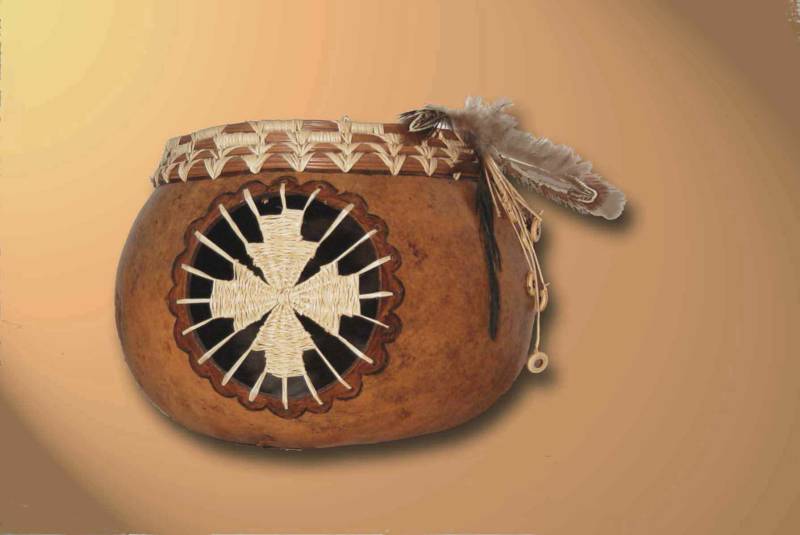Supplies need:
Using a cleaned gourd, cut an opening in the side of the gourd. The opening can be just about any shape from circular to diamond or square. Drill holes around the outside of the opening using a 3/32-inch drill bit. Space the holes about ¼ inch apart and about ¼ in from edge of opening. The number of holes is determined by the teneriffe design that you want to create.
After the holes are drilled, the gourd should be decorated, painted or whatever you wish to do so it is completely finished except for the Teneriffe and the sprayed finish. The very last thing that you want to do is the teneriffe.
Split the raffia into strips about 1/8 inch wide. Dampen the raffia. Thread raffia on needle. Tie a knot in the end. Bring the needle through one of the holes from the back to the front of the gourd and pull tight. Put the needle through the hole directly across from the first hole. Bring the needle back up through the next hole and across to the hole opposite it. You do this until there are no longer any holes. The stitched design should look like spokes. The last stitch should end up on the inside of the gourd where you will tie it off. Trim off any left over raffia.
Thread a second 1/8 in wide piece of raffia on your needle and begin weaving the teneriffe design you have chosen. If you begin to run out of raffia, pull the raffia to the back and tie off so that it does not show. Continue weaving until the design is finished.
Place a little glue on the knots on the inside of the gourd as a precaution. Then spray the gourd and teneriffe design with a finish.
